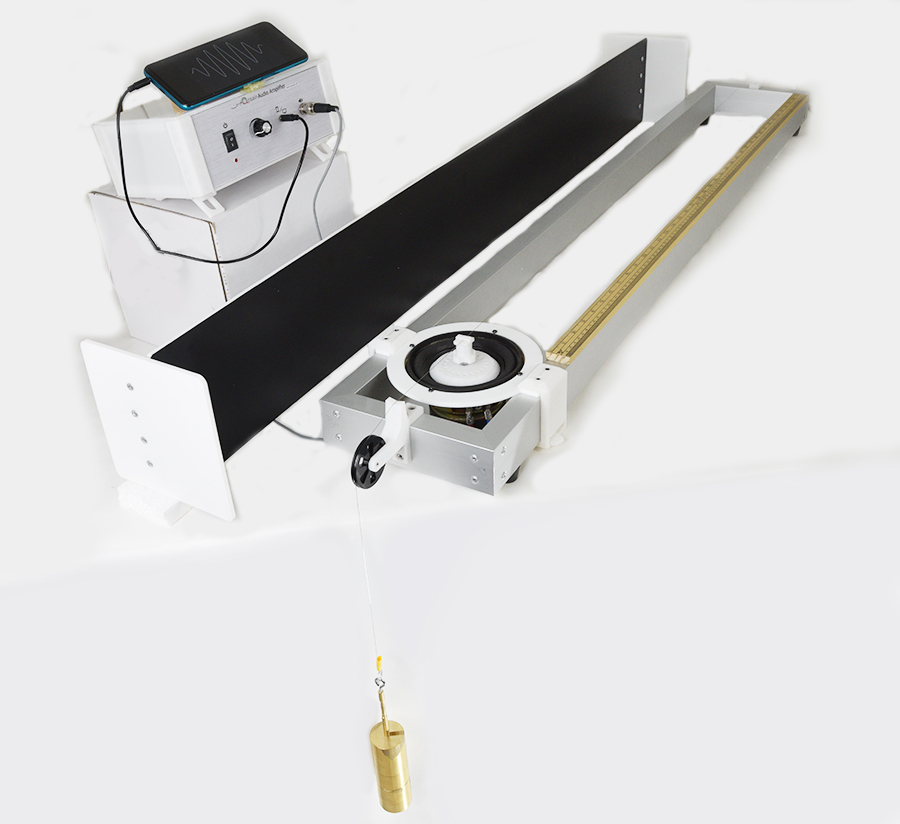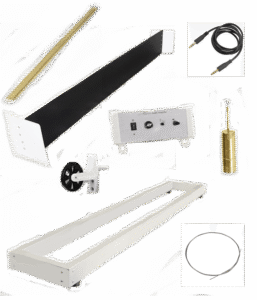Vibration on a String
Beats and harmonics dominate all our music and songs. In this experiment, investigate the magic of waves with a hands-on experiment on resonance and frequencies! Observe the stationary waves on a vibrating string and learn how changes in tension and length affect resonance. Investigate non-linearities in a vibrating string and explore the fascinating circular modes that can form on a string.
Overview
The Experiment
- The concept of a wave.
- Derivation of the wave speed.
- Identifying where resonance occurs.
- Detecting stationary waves on a string.
- Distinguishing linear from nonlinear behaviors.
- Correlating experimental plots with mathematical relationships.
How does it work?
This experiment involves a stretched string fixed from one end and strung over a pulley, with a weight hung at the other end. The string is set under vibrations using a mechanical oscillator, and standing waves are established. The aim is to locate normal modes of the vibrating string and observe the formation of stationary waves at resonance. Changes in tension and string length affect resonance, and the frequency will be varied until a pattern of standing waves is observed. The relationship between frequency and the number of half-wavelengths will be verified.
Get Inspired!
- Beats
- Doppler Effect
- Chladni patterns
- Waves interference


